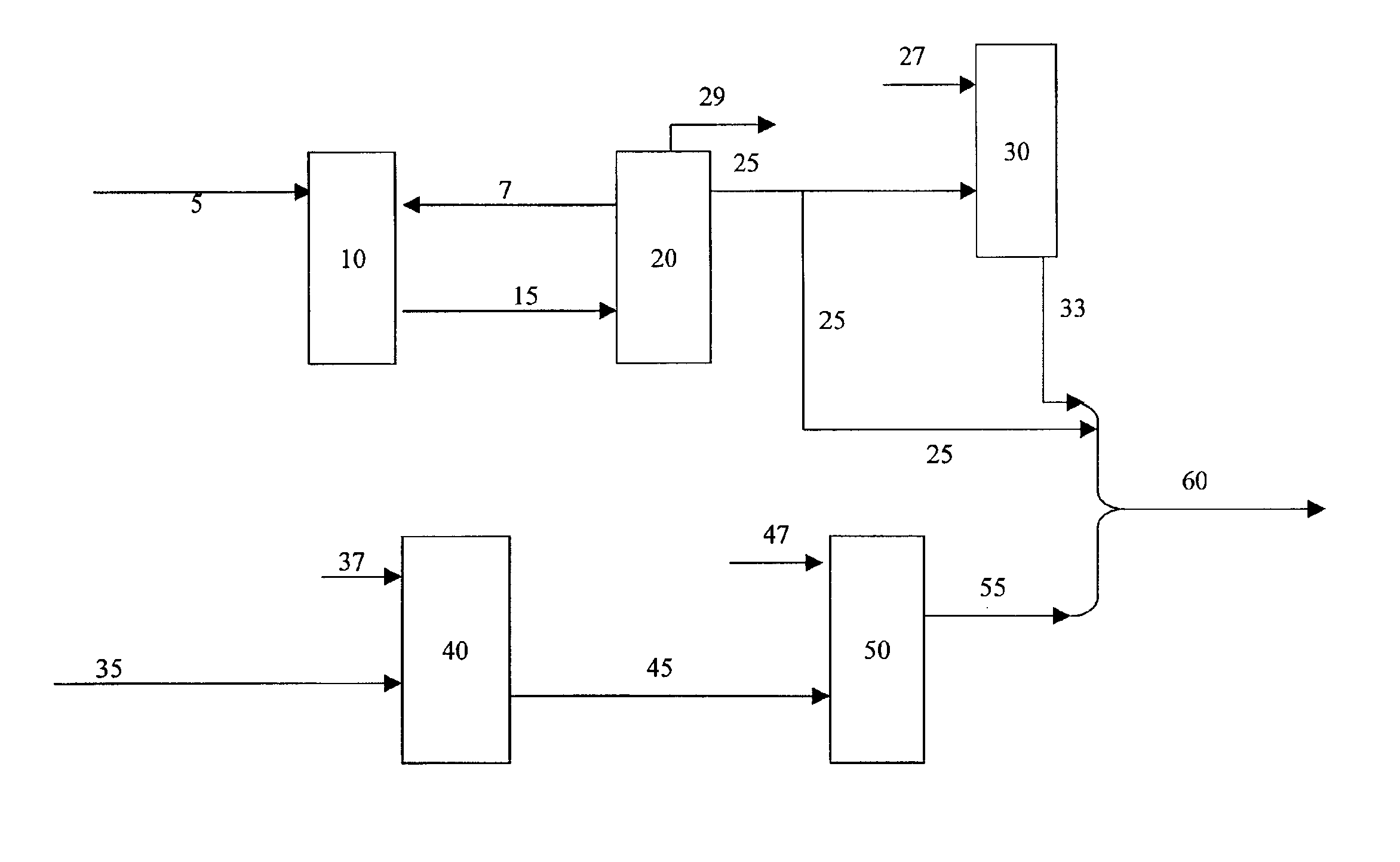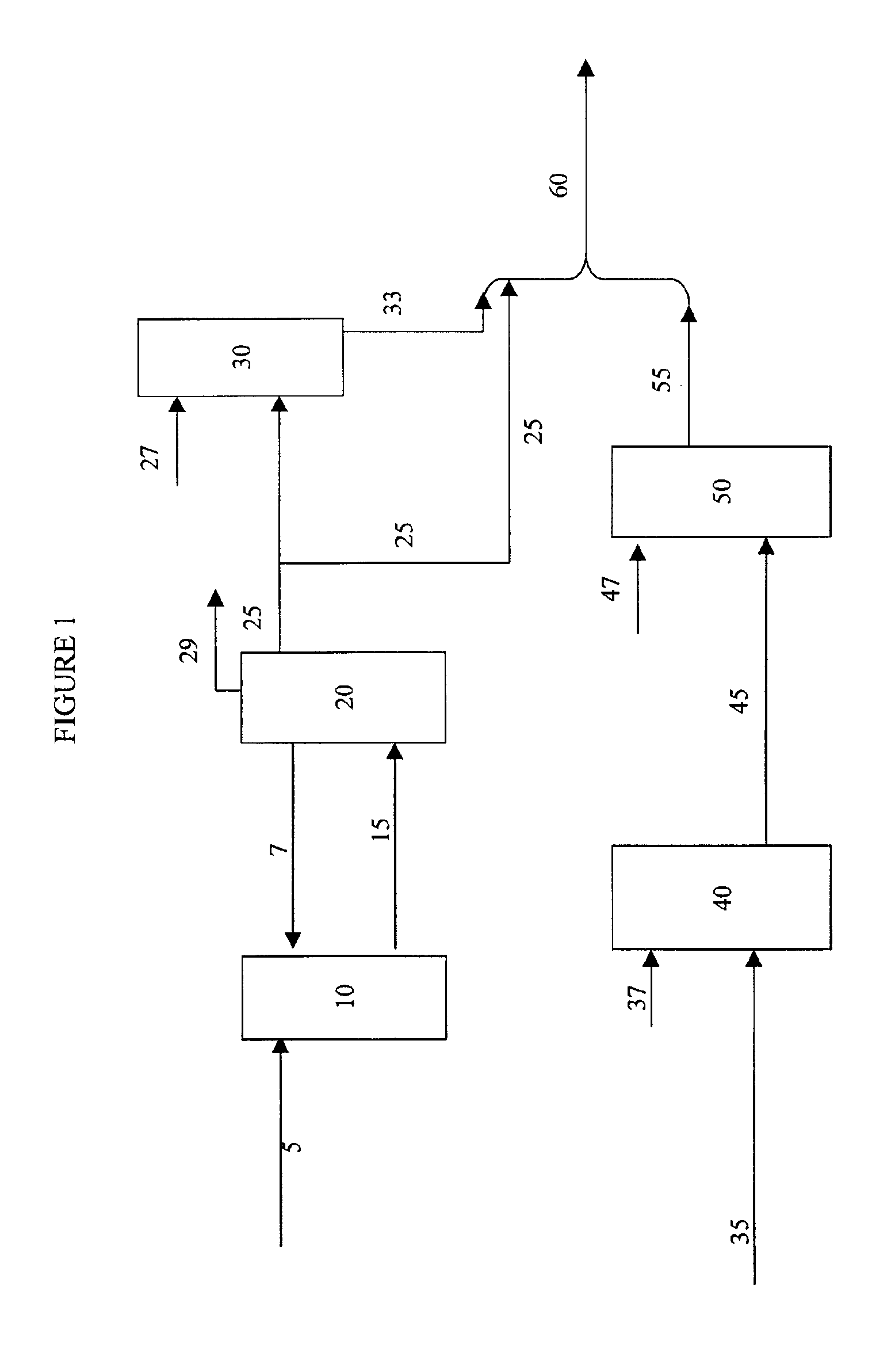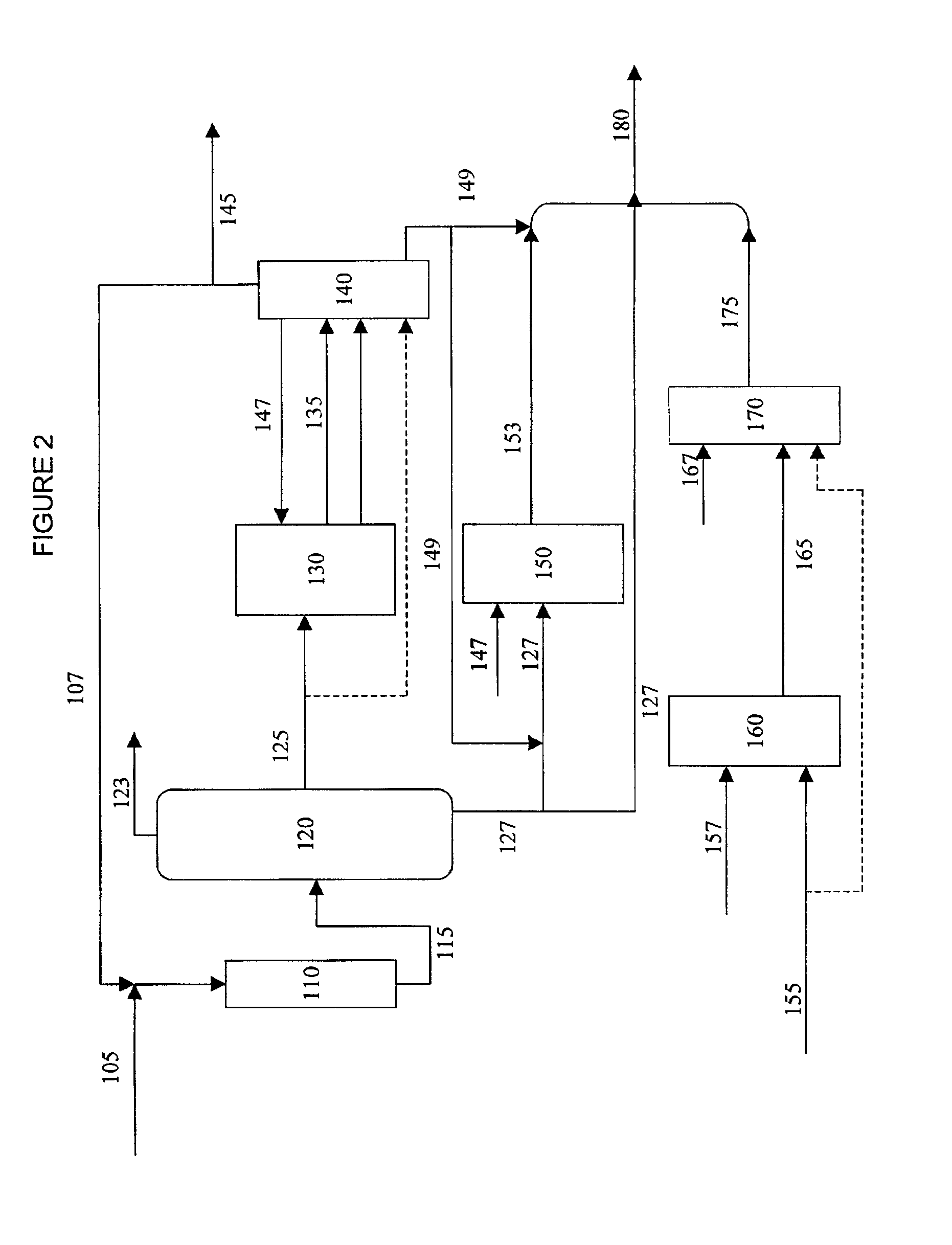Distillate fuel blends from Fischer Tropsch products with improved seal swell properties
a technology of distillate fuel and products, which is applied in the direction of fuels, naphtha treatment, hydrocarbon oil treatment products, etc., can solve the problems of limited use of fischer tropsch distillate fuel, poor seal swell properties, poor lubricity, etc., and achieve the effect of improving the seal swell properties of distillate fuel blends
- Summary
- Abstract
- Description
- Claims
- Application Information
AI Technical Summary
Problems solved by technology
Method used
Image
Examples
example 1
Preparation of Diesel Fuel Samples
[0103]A Fischer Tropsch product was generated by reacting synthesis gas over an iron-containing catalyst. The product was separated into a diesel boiling range product (A) and a wax. The diesel product (A) was hydrotreated to remove oxygenates and saturate olefins. The wax was hydrocracked over a sulfided catalyst consisting of amorphous silica-alumina, alumina, tungsten and nickel. A second diesel product (B) was recovered from the effluent of the hydrocracker. The two diesel products were blended in the proportion of 82% B and 18% A by weight. Properties of the Fischer Tropsch (FT) diesel fuel blend are shown in Table 1 along with the ASTM D975 specifications. Table 1A shows the properties of a conventional Low Aromatics Diesel Fuel, and conventional diesel fuel that contains significant quantities of sulfur and aromatics.
[0104]
TABLE 1ASTM D975Fischer TropschTESTSSPECIFICATIONSDieselAPI GRAVITY, 60° F.52.3SULFUR, ppm0.05(% mass max.)NITROGEN, NG / U...
example 2
Preparation and Evaluation of Blends of FT Diesel with Alkylaromatics and Alkylcycloparaffins
[0107]Blends of a light alkylaromatic (cumene) or alkylcycloparaffin (isopropylcyclohexane) with a FT diesel fuel are prepared. The improvement in the seal swell and lubricity are determined along with the decline in cetane index. A preference for alkylaromatics or alkylcycloparaffins can be determined by finding which species gives the greatest improvement in seal swell with the least decline in cetane index. The cetane index in these experiments was determined from a D2887 distillation, converted to D-86 equivalent, molecular weight and density at 20° C. This method provides an acceptable and reproducible measurement of the cetane index.
[0108]The seal swell test followed ASTM D471:[0109]O-ring type: o-ring size 2-214 Buna N, vendor McDowell & Co[0110]Test Temperature: ambient 23+ / −2° C.[0111]Test Duration: 70 hours[0112]Test sample size: 100 ml[0113]Number of o-rings per sample: three[0114...
PUM
| Property | Measurement | Unit |
|---|---|---|
| boiling points | aaaaa | aaaaa |
| temperatures | aaaaa | aaaaa |
| temperature | aaaaa | aaaaa |
Abstract
Description
Claims
Application Information
 Login to View More
Login to View More - R&D
- Intellectual Property
- Life Sciences
- Materials
- Tech Scout
- Unparalleled Data Quality
- Higher Quality Content
- 60% Fewer Hallucinations
Browse by: Latest US Patents, China's latest patents, Technical Efficacy Thesaurus, Application Domain, Technology Topic, Popular Technical Reports.
© 2025 PatSnap. All rights reserved.Legal|Privacy policy|Modern Slavery Act Transparency Statement|Sitemap|About US| Contact US: help@patsnap.com



